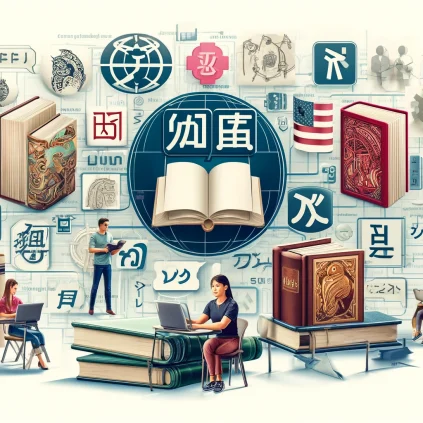In the realm of global marketing, the challenge of conveying the essence and impact of a brand’s message across diverse cultures and languages is formidable. This challenge is particularly pronounced when entering the vibrant and varied markets of Asia. Here, straightforward translation often falls short of capturing the nuances and cultural contexts that can make or break a marketing campaign. This is where transcreation comes into play. Our company – Asia Translation, has the necessary expertise to provide a solution for your Asian Language transcreation requirements.
What is Transcreation?
Transcreation is a blend of “translation” and “creation.” It goes beyond the literal translation of words to adapt the original message’s tone, style, and emotional impact to resonate with a different cultural audience. It involves a deep understanding of both the source and target cultures to ensure that the core message, creativity, and intent are preserved and adapted effectively.
The Importance of Transcreation in Asian Markets
Asia is a continent rich in cultural diversity, with each country having its own distinct traditions, languages, and social norms. A marketing campaign that works well in one Asian country might not have the same effect in another. Here are some reasons why transcreation is crucial for marketing campaigns in Asian languages:
1. Cultural Sensitivity and Relevance
Asian cultures have deep-rooted traditions and values that influence consumer behavior. A marketing message that resonates well in Western cultures might be misinterpreted or even deemed offensive in an Asian context. Transcreation ensures that the message is culturally sensitive and relevant, avoiding potential pitfalls and enhancing the campaign’s acceptance.
2. Language Nuances
Languages in Asia, such as Chinese, Japanese, Korean, Thai, and Hindi, have unique structures, idioms, and connotations. Direct translation can result in a loss of meaning or emotional impact. Transcreation addresses these nuances, crafting a message that maintains the original’s intent and emotional resonance.
3. Local Humor and Expressions
Humor is a powerful tool in marketing but is highly culture-specific. What is funny in one culture might be confusing or offensive in another. Transcreation allows for the adaptation of humor and expressions to align with local sensibilities, making the campaign more engaging and relatable.
4. Brand Voice and Consistency
Maintaining a consistent brand voice across different markets is essential for global brands. Transcreation helps in preserving the brand’s personality and tone while adapting the message to fit the cultural context of the target market. This consistency strengthens brand identity and loyalty.
Case Studies of Successful Transcreation in Asian Markets
Coca-Cola in China
Coca-Cola’s “Taste the Feeling” campaign, launched as part of their global “One Brand” strategy, was adapted into Chinese as “品味每一刻” (pǐnwèi měi yī kè), which means “Savor Every Moment.” This adaptation goes beyond a direct translation to capture the emotional essence of enjoying Coca-Cola in a way that resonates with Chinese cultural values of savoring life’s moments (History Oasis) (Marketing Week) (MarketingMag).
Nike in Japan
Nike’s global slogan “Just Do It” was transcreated for the Japanese market to “やってみよう” (Yatte miyou), which translates to “Let’s Try It.” This version encourages action in a way that aligns with Japanese cultural emphasis on group harmony and collective effort, making it more motivational and culturally appropriate.
KFC in China
When KFC entered the Chinese market, they faced the challenge of translating their famous slogan “Finger Lickin’ Good.” The direct translation would have been inappropriate and confusing in Chinese. Instead, KFC transcreated the slogan to “吃完手指都香” (Chī wán shǒuzhǐ dōu xiāng), which means “So good that you will lick your fingers.” This adaptation preserved the original intent while making it culturally relevant and appealing to Chinese consumers.
McDonald’s in India
McDonald’s is known for adapting its menu to suit local tastes, but their marketing campaigns also undergo significant transcreation. For example, McDonald’s introduced the “Maharaja Mac,” an Indianized version of the Big Mac, and promoted it with the slogan “Bade Kaam Ka Bhookh Mitao” (Satisfy Your Big Hunger). This campaign resonated with Indian consumers by addressing their cultural preference for larger portions and spicier flavors, ensuring that the brand’s message and appeal were effectively communicated.
Ariel in Japan
Procter & Gamble’s laundry detergent brand Ariel ran a successful transcreation campaign in Japan with the tagline “あなたの代わりに汚れと戦います” (Anata no kawari ni yogore to tatakaimasu), which translates to “We fight the stains for you.” This slogan emphasized the product’s efficacy in a culturally resonant manner, highlighting the brand’s commitment to making household chores easier and more efficient for Japanese consumers. The campaign’s success was evident in Ariel’s increased market share in Japan.
Heineken in Vietnam
Heineken’s “Open Your World” campaign was initially successful but faced challenges as the target consumer demographics shifted. The tagline “Open Your World,” used since 2011, was based on the insight that “to progress in life you must cross your border.” However, Heineken’s annual brand testing revealed that this message no longer resonated with their target audience of 25- to 34-year-olds, who felt pressured rather than inspired by it.
As a result, Heineken undertook a major strategic shift. They decided to focus on helping consumers enjoy life, emphasizing the product over the brand. They introduced campaigns with no taglines, instead twisting clichés and ending with “That’s Heineken.” This new approach included TV commercials for their sponsorships of the UEFA Champions League, Formula 1, and Rugby World Cup. These campaigns aimed to connect with millennials by lifting the pressure and encouraging a positive, fresh perspective on life. This shift reflected Heineken’s recognition of the evolving needs and stresses faced by millennials globally (MarketingMag).
The Transcreation Process
- Market Research and Cultural Insights Understanding the target market’s culture, values, and consumer behavior is the foundation of successful transcreation. This involves thorough research and consultation with local cultural experts.
- Creative Adaptation The original message is creatively adapted to fit the cultural context. This step involves copywriters, linguists, and cultural consultants working together to craft a message that maintains the original intent and emotional impact.
- Testing and Feedback The transcreated message is tested with focus groups from the target market to gather feedback and ensure it resonates as intended. Adjustments are made based on this feedback to refine the message further.
- Implementation and Monitoring Once finalized, the transcreated campaign is launched. Continuous monitoring and feedback collection help in making any necessary adjustments to enhance effectiveness.
Transcreation is not just a linguistic exercise; it is a strategic approach to bridging cultural gaps and ensuring that marketing messages resonate deeply with diverse audiences. In the dynamic and varied markets of Asia, transcreation is indispensable for brands aiming to connect with consumers in a meaningful and impactful way. By respecting cultural nuances and adapting creatively, brands can achieve greater success and build stronger connections with their Asian audiences.



